type
status
slug
summary
tags
category
icon
password
ID
date
Author
URL
On May 12, 2021, Weilong submitted an application for listing, it's Pre-IPO financing has a post-investment valuation of more than RMB 60 billion, equivalent to the combined market capitalization of Qiaqia Food, BESTORE and Three Squirrels, the latter three of which are all listed casual food companies in China. If Wei Long can successfully go public this time, it will become the highest market capitalization casual food company in China.
Konjac, scientifically known as Amorphophallus konjac, is a herb native to southwestern China, Japan, India, Sri Lanka, the Malay Peninsula, and other regions.
This herb has a long history of cultivation and use in China, as evidenced in ancient texts like “Ben Cao Tu Jing” and “Ben Cao Gang Mu“. Renowned for its cooling properties and mild taste, konjac is highly valued as a medicinal herb with the ability to reduce swelling and eliminate toxins. It is chiefly used to treat carbuncles, swelling, poisoning, and tropical diseases.
Notably, konjac is low in calories and fat, yet it is rich in fiber and contains no cholesterol. In fact, every 100 grams of konjac flour contains over 70 grams of fiber, surpassing the fiber content of many other foods. Considering that nutritionists recommend a daily intake of 25-30g of dietary fiber for adults, consuming 50g of konjac can effectively meet the daily dietary fiber requirements.
Processed konjac food has lower levels of starch and fat, leading to fewer calories. Its beneficial impact on dietary fiber allows it to lower blood lipids, reduce blood sugar, and inhibit cholesterol absorption. This has made it a highly sought-after snack among young people in modern China, as it satisfies cravings while promoting fitness.
You May Also Want To Read: What Is Konjac Shuang?
Weilong, one of China’s largest casual food companies, has achieved even greater commercial success with its Latiao and konjac shuang products. On May 12, 2021, Weilong submitted its listing application to the Hong Kong Stock Exchange, and the post-IPO valuation of Weilong’s Pre-IPO financing exceeded RMB 60 billion (About $9.5 billion).
What factors led to Weilong receiving such a high valuation? And what path did it follow to reach its current position? This article will delve into the journey that has enabled Weilong to grow into a leading Chinese casual food company.
The entrepreneurship of “Ping Ping”
Henan Luohe holds the prestigious title of “China’s food city,” boasting a multitude of diverse food enterprises within its boundaries. Notably, it is the founding location of the renowned Weilong headquarters. Furthermore, the city is home to the headquarters of Shuanghui, China’s largest meat processing base and a prominent national leader in agricultural industrialization. Additionally, it serves as the primary base for well-known mainland Chinese brands such as Want Want and Uni President.

Liu Weiping and Liu Fuping, the founders of Weilong, are actually blood brothers. They ventured into the casual food industry back in 1999, but the products we now know them for, like Latiao and konjac shuang, were not yet on the scene.
Their roots can be traced back to Pingjiang, Hunan Province, a region known for Jiang Gan, a brined and roasted bean product. However, due to the soaring prices of soybeans, the main ingredient for Jiang Gan, many locals turned to using this process to create a gluten snack known as Latiao. This shift in production sparked a business opportunity that caught the attention of the entrepreneurial Liu Weiping brothers.
You May Also Want To Read: What Is Latiao?
In 2001, they left their hometown and moved to Henan Luohe with the Latiao recipe to start a business.
In 2003, inspired by his admiration for the renowned movie star Jackie Chan, also known as “Cheng Long” in Chinese, Liu Weiping combined “Wei” from his name with “Long” from “Cheng Long” to create the brand “Weilong” and applied for a trademark. This marked the inception of the first brand in the Chinese Latiao industry.
Following this, the two brothers selected a character “Ping” from each of their names and established the Ping Ping Food Processing Factory. They relocated to the Luohe Industrial Park with a commitment to producing the “Weilong” series of snack foods.
Rapid Development
Liu Weiping realized from the start that in order to expand the brand, they needed to invest more in technology. As early as 2004, he increased the capital investment and introduced a complete set of fully automatic packaging equipment from Europe.
Weilong was expected to gain momentum at this point, but that wasn’t the case. In 2005, an incident involving the addition of non-edible preservatives to gluten at the Pingjiang gluten factory had a significant impact on the number of Latiao enterprises in Pingjiang, causing it to plummet by three-fourths, leaving only around 500. The Weilong brand also suffered a setback as a result, gradually recovering only in 2008.
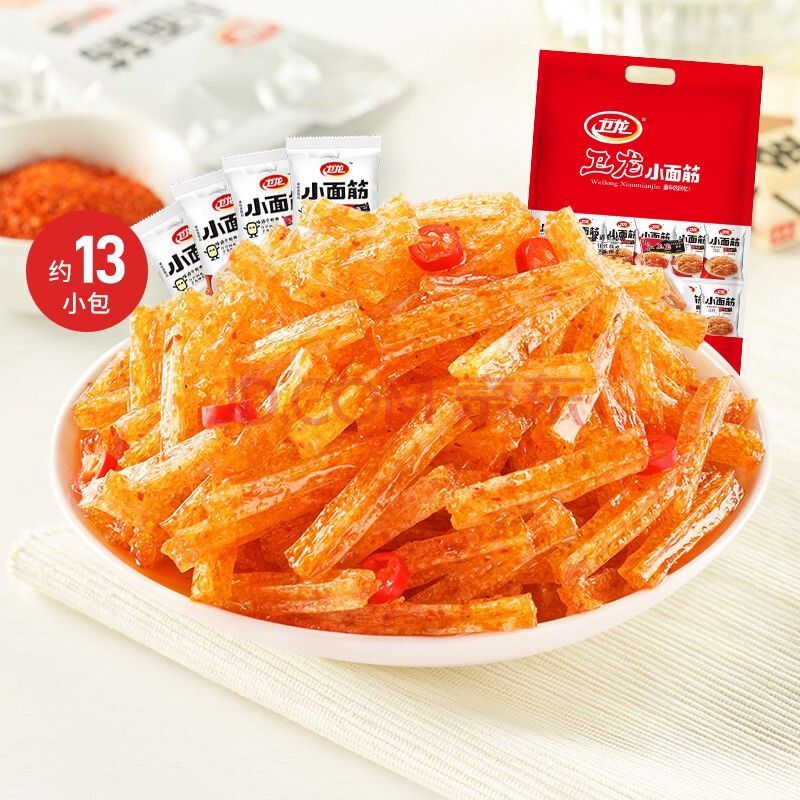
From 2005 to 2010, Weilong introduced small and large gluten casual snacks, gradually expanding the scale of the enterprise. Weilong became a well-known trademark and brand in Henan Province.
After conducting market research, Liu Weiping decided to leverage the star effect to promote the Weilong brand. Since 2010, Weilong has enlisted renowned Chinese actresses like Yang Mi to endorse the “Kiss Burn” and “Kiss Bean Tendon” product series, thereby enhancing the brand’s influence.
In 2014, Luohe Weilong Trading Co., Ltd. and Luohe Weilai Food Technology Co., Ltd. were established, with significant investments in capital and technology dedicated to developing a broader casual food market. The homonym “Wei Lai” in Chinese also means “Future,” symbolizing Weilong’s hopeful outlook for the company’s future.
In 2015, Weilong expanded its sales channels to e-commerce platforms, marking the commencement of online sales. Weilong’s snack products quickly gained a presence on leading Chinese e-commerce platforms such as Tmall, Jingdong, and the Store, underscoring its commitment to creating a comprehensive, multi-level, and precise online sales network.
Between 2015 and 2016, Weilong recognized the impact of online communication and proactively collaborated with popular Weibo bloggers to periodically create buzz, while also establishing its official account. Currently, Weilong’s official Weibo account “Weilong Delicious” boasts 381,000 followers, contributing to a rapid enhancement of its brand image.
During this period, Weilong also initiated the establishment of its second production plant.
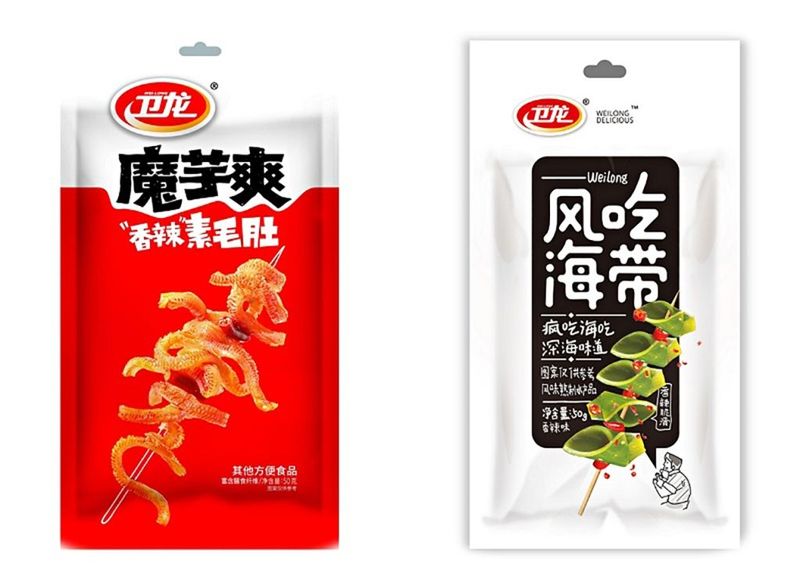
In 2017, Weilong expanded its capacity and introduced the SAP information management system. In the same year, Weilong followed the trend of healthy casual snacks and launched the “konjac shuang” product, which received the “Convenience Food Innovation Award”. Subsequently, Weilong introduced “wind eat seaweed”, resulting in a significant increase in the sales of vegetable snacks.
In 2018, Luohe Weidao Food Technology Co., Ltd. was established, focusing on the production of konjac products.
From 2018 to 2020, the sales share of Weilong’s vegetable snack products increased from 10.8% to 28.3%, while the sales share of soybean snack products decreased from 10.6% to 6.4%.
In 2019, Weilong integrated offline and online resources to establish a multi-channel sales and distribution network. Additionally, the second phase of Weilong Park was completed and became operational, increasing the level of automation and production capacity. The annual output of casual snacks could now reach 100,000 tons. Weilong’s headquarters also relocated to this new facility, covering an area several times larger than before.
In 2020, Shanghai Weilong Delicious Biotechnology began operations and the construction of the third phase of the park commenced. According to Weilong’s strategy, there are plans to establish a casual food industrial park for vegetable products, meat products, egg products, flour products, etc., as well as an e-commerce logistics park. Upon the full completion and operation of these projects, Weilong will become a food enterprise with a business volume exceeding 10 billion RMB (about $1.6 billion).
Application for IPO
Weilong has shown strong Return on Equity (ROE) in recent years, reaching 493.5% in 2018, 135.6% in 2019, and then declining to 66.9% in 2020 due to the impact of the epidemic. Despite this, Weilong achieved impressive sales revenue of RMB 4.12 billion (approximately $650 million) and a net profit of RMB 818 million (approximately $129 million) in 2020. This is 2.37 times higher than BESTORE, the leading brand in the same industry in China, and 2.71 times higher than Three Squirrels.
On May 12, 2021, Weilong submitted an application for listing under the name “Weilong Delicious Global Holdings Ltd.” The company’s Pre-IPO financing has resulted in a post-investment valuation of over RMB 60 billion, equivalent to the combined market capitalization of Qiaqia Food, BESTORE, and Three Squirrels, all of which are listed casual food companies in China.
Weilong successfully secured the 49th position on the “2021 Global Unicorn List” released by the Hurun Research Institute, a leading Chinese wealth ranking research institute.
According to the prospectus data, Weilong holds 5.7% of China’s spicy casual food market, securing the top position and demonstrating a continuous upward trend.
A report by Frost & Sullivan predicts that retail sales in China’s spicy casual food industry will reach RMB 257 billion (approximately $40.5 billion) by 2025, with the market size of flavored flour products reaching RMB 67.2 billion (approximately $10.6 billion).
If Weilong successfully goes public this time, it will become the casual food company with the highest market capitalization in China. It is also believed that its proposed goal of achieving an annual output value of more than 10 billion RMB will soon be realized.
The Products
After years of diversification, Weilong now offers five product series, comprising flavored flour products, soy products, konjac products, vegetarian products, meat products, and marinated eggs. In total, there are over 40 different products, all of which fall into the category of spicy snacks.
Flavored flour products
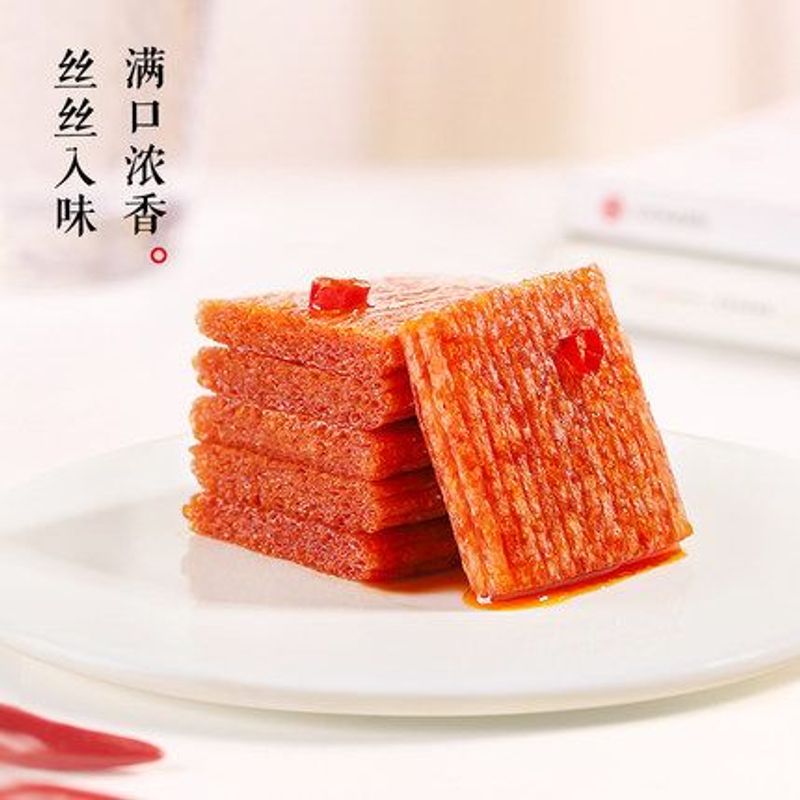
The primary ingredient in this category is gluten, and Weilong’s initial Latiao release falls into this category, encompassing big gluten, small gluten, Kiss Burn, Kiss bar, big spicy bar, small spicy bar, and baked gluten, among others.
Soy products
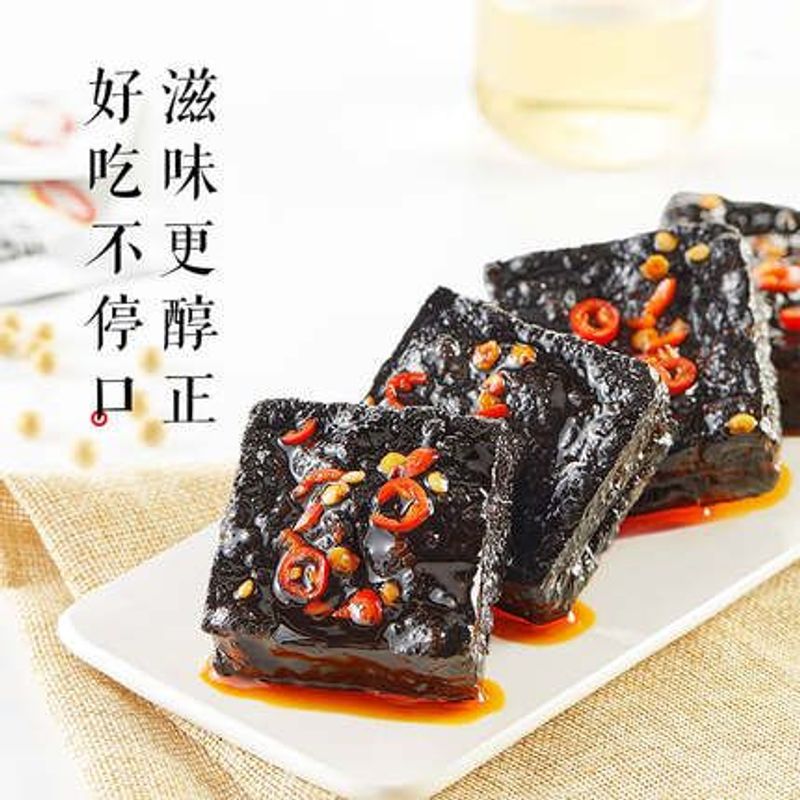
The primary raw material used is the soybean series of products. This includes spicy sliced beancurd, kiss beancurd sheets, big hot beancurd sheets, and other similar products. Additionally, we have recently started offering Changsha specialty stinky tofu snacks in small packages through online platforms.
Konjac products
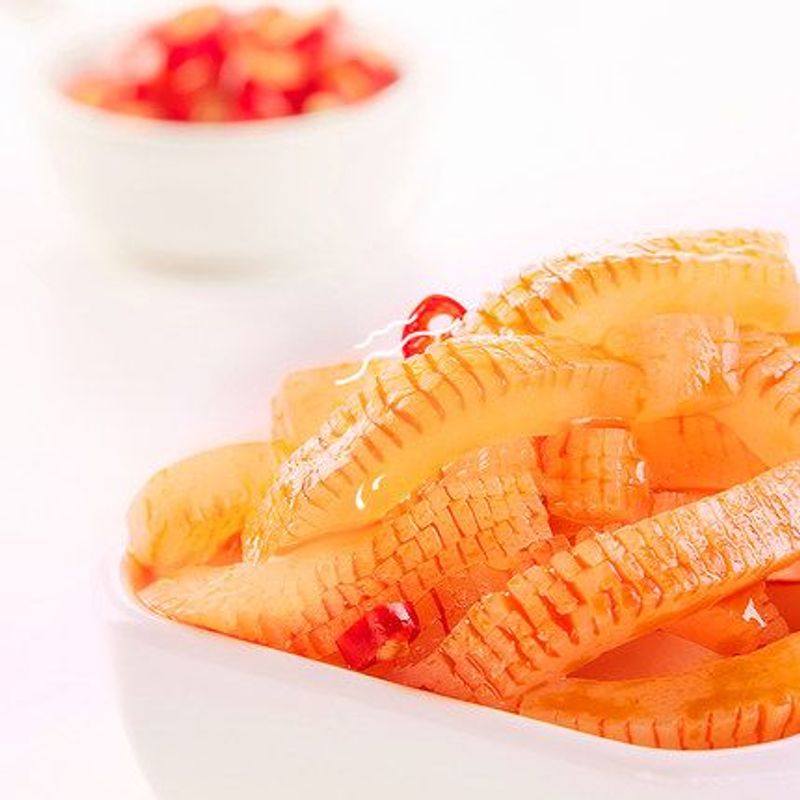
Konjac snacks come in three delicious flavors: piquant, sour-spicy, and spicy hot. The star of the show is the konjac shuang.
Vegetarian products
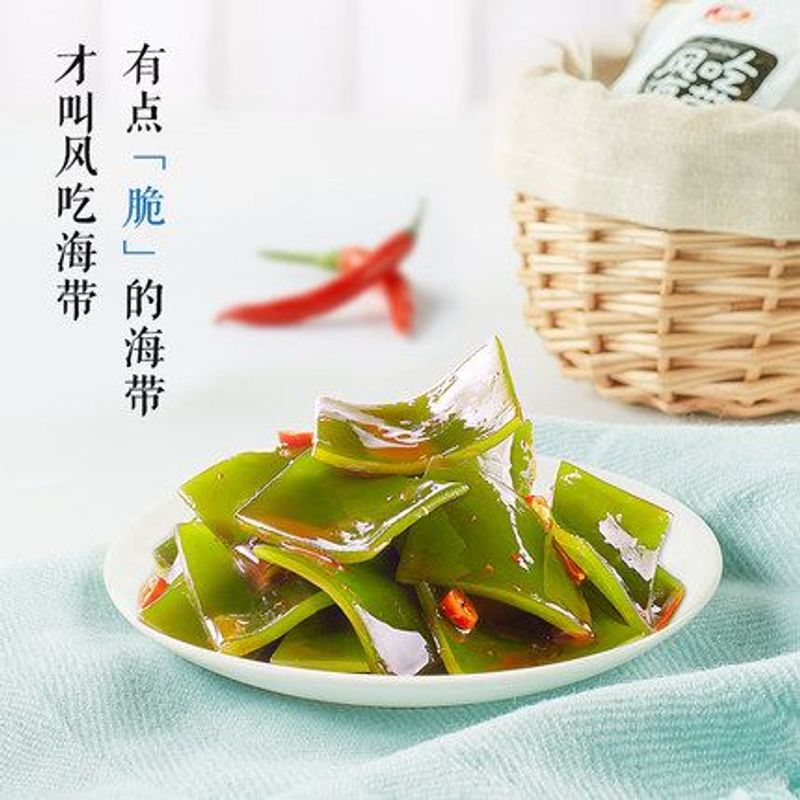
The raw materials consist of a variety of vegetables and grains, incorporating products such as seaweed snacks, spicy potato chips, mixed grain snacks, hot and sour noodles, and small strips of fried dough.
Meat products
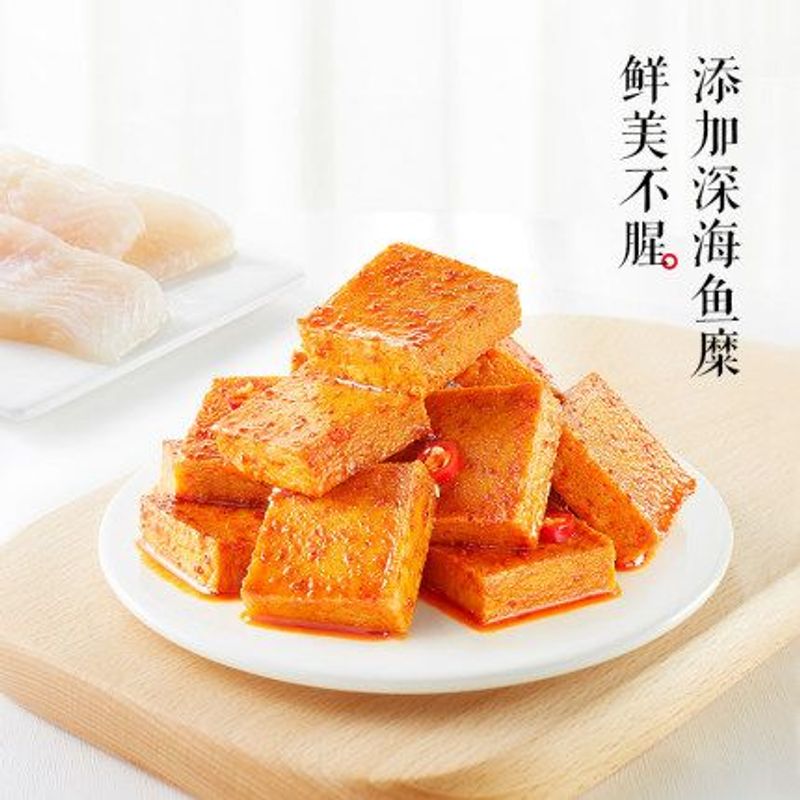
A variety of fish and meat snack products are available, such as fish tofu, fish balls, hand-torn crab-flavored sticks, pickled pepper chicken feet, grilled small sausages, and more.
Marinated eggs

There is currently only one product in this category, the 78° Marinated Egg. It stands out with a rounder surface and brighter color compared to other common marinated eggs. Additionally, it is the sole snack among Weilong’s products that has almost no spicy taste at present.
- Author:NotionNext
- URL:https://pandayoo.com/2022/03/01/weilong-became-a-unicorn-with-its-latiao-and-konjac-shuang
- Copyright:All articles in this blog, except for special statements, adopt BY-NC-SA agreement. Please indicate the source!